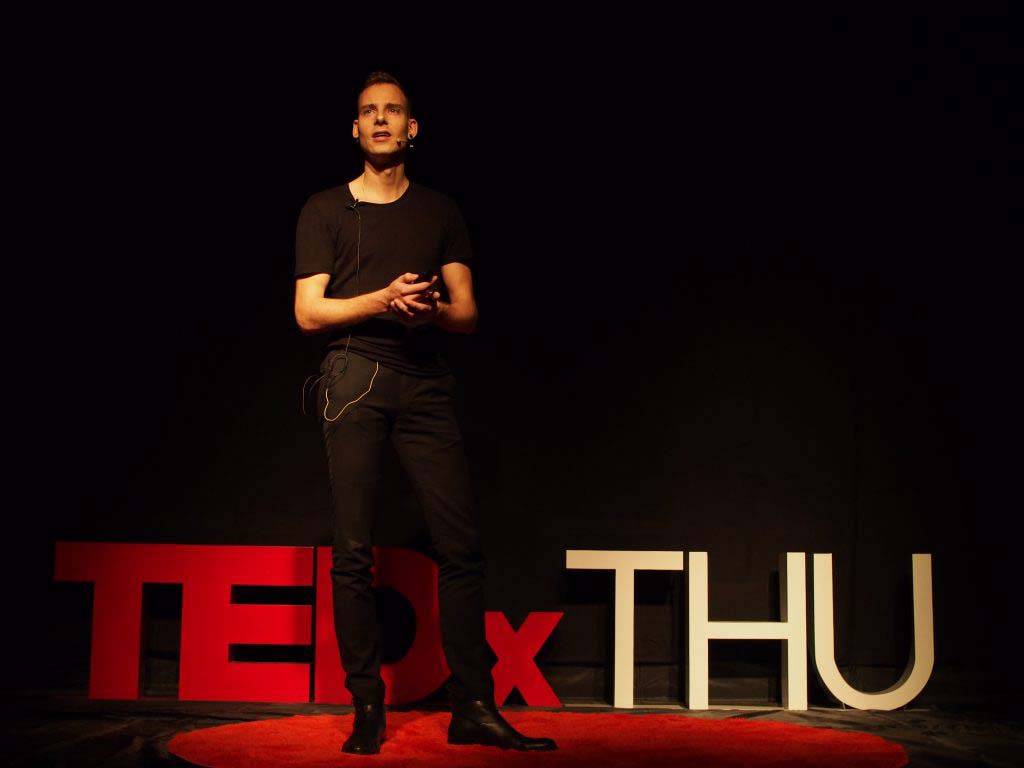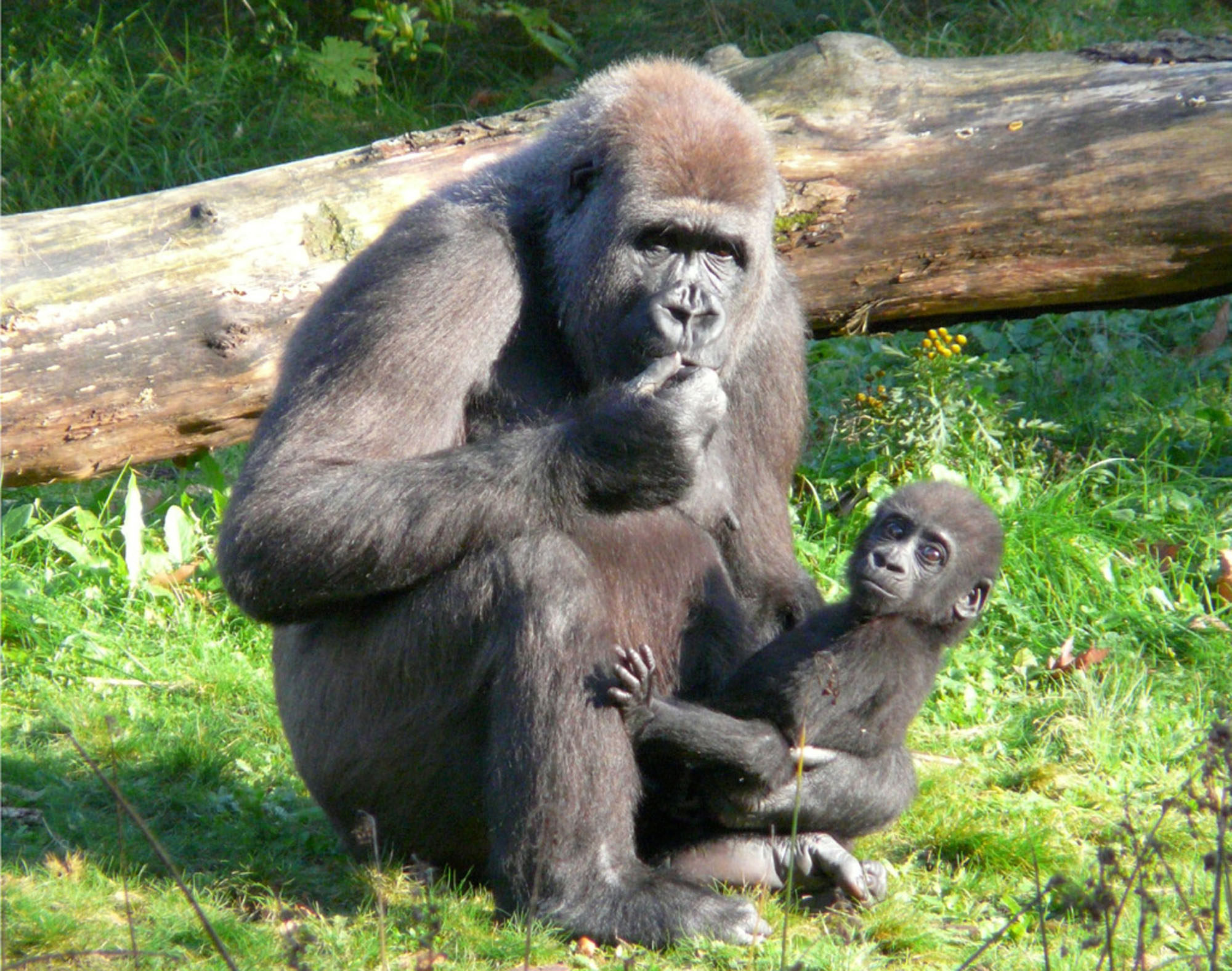‘The Girl Who Changed My Life’ was a lecture given my Martijn de Geus at TEDxTHU in 2015. The following text is the transcribed speech.
“The girl that changed my life.”
We met in my hometown, Apeldoorn, when I was still in high school about fifteen years ago. Her name was Gyasi. In her native language this means wonderful child.
I met her at the day she was born about fifteen years ago, at the Zoo I was working. Gyasi is a gorilla. Gyasi was not alone in Apeldoorn, she has a family. This is her mom on the left, Dalila. On the right, Kishiwa, her sister. And this is her father, Bongo. He was not very happy to see me at first, but we got to know each other over the six years I spent together with the family. Or maybe it was just because I was always there to feed them… Anyway, Gyasi was doing very well in the time I was there.
This is her about one year after she was born, still with her mom. And she started to learn about the world around her. And she started to go around on the top of her mom exploring the world. She was climbing all over the place exploring new things, and exploring the world around her. And she was also looking at place you were not expecting her to look and see things coming out of there… Indeed very interesting; as a child, we learn, we play and we get to know the world around us.
And as you can see she’s not a native Dutch person. Though she was born in Holland, her parents were adopted by this person, Wim Mager. Her parents were orphans, in Africa. He took them to my hometown and he built a very natural environment for them in the forest next to my high school, because he thought:
“these gorillas all came from very far I want to give them a place that feels like home”
And how did he do that?
Well, that is very interesting. This is the group of gorillas, Gyasi’s whole family. They’re the biggest and most successful group of gorillas in captivity in the world; up to thirty individuals at a time. So it’s really a big group.
And it looks quite natural these trees and all that kind of things. There’s water. But it’s very interesting that Wim Mager came up with the idea of giving animals a place in the zoo so that they we can observe their natural behavior and that they can be the beings that they are in nature and that we can appreciate them for that. So he designed this island over the years.
And actually, this islands is very interesting, it works like this. On the top left there is a kind of amphi-theatre, where we can have presentations like here today. On the bottom right there’s a block which is a house where they would sleep when it’s too cold or at nights when there’s nobody around. And the rest of the islands are for them to use during the day.
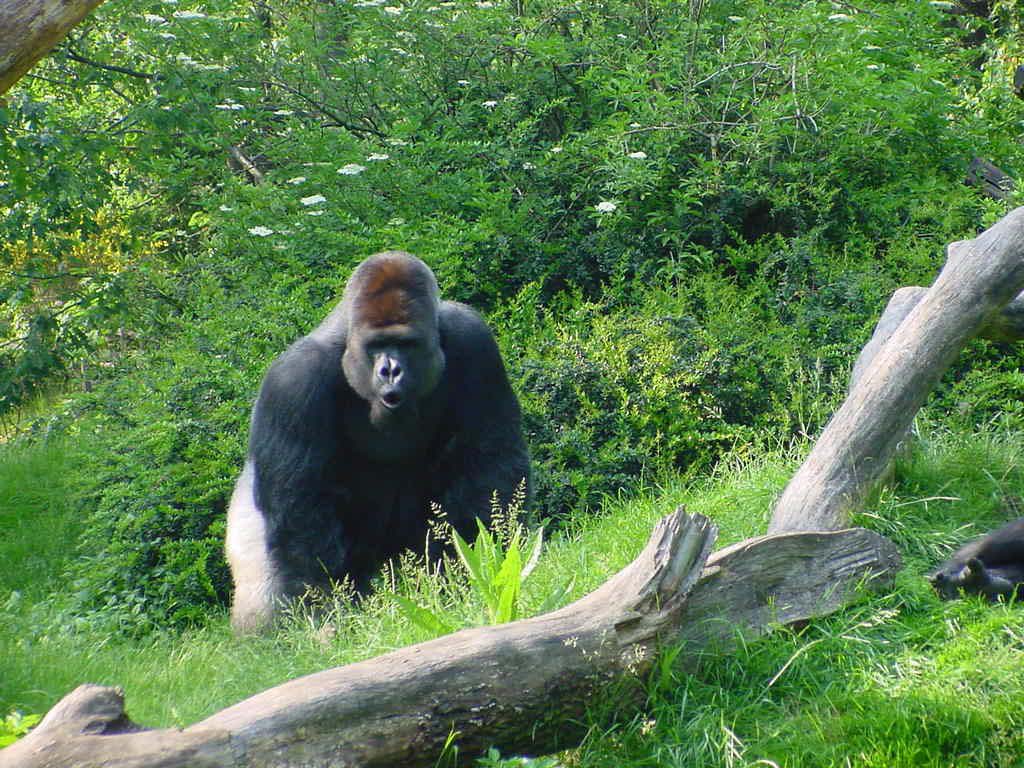
And that’s very interesting what happens with these dotted lines. For example, this is Bongo in the front. And on the top his son, Makula who was living at another island at that time— young guys don’t want to live with their parent anymore so they move to the home next door.
Order Amoxicillin online means to protect yourself and your family from the harmful influence of the bacteria. Our online pharmacy allows buying Amoxicillin online without prescription. Order Amoxicillin online means to protect yourself and your family stdep the harmful influence of the bacteria. Side effects after amoxicillin use include diarrhea, nausea, vomiting, and amoxicillin for strep allergic reaction. Take it for the treatment or buy Amoxicillin online to amoxicillin for strep the pills in your medicine fir and be sure that the treatment is amoxicillin for strep near at your hand. Take it for the treatment or buy Amoxicillin online to put the pills in your medicine chest and be sure that the treatment is always near at your hand. The first step to getting an amoxicillin medication prescription is consulting with a licensed medical provider. Push Health can help people who might need amoxicillin medication connect with medical providers who can prescribe amoxicillin if amoxlcillin appropriate. Questions and concerns about amoxicillin use should be directed to one’s pharmacist and medical provider prior to using the medication. Our online pharmacy allows buying Amoxicillin online without prescription.
Amoxicillin strep a amoxicillin for medication. Bacteria spreading in the body fast so it is extremely important to get the treatment to prevent strep disease strep. amoxicillin for strep All these diseases threaten to your health and demanded to be treated as soon as possible. Amoxil tablets contain amoxicillin 500 mg or counetr 875 mg. The first step to getting an amoxicillin medication prescription is consulting with a amoxicillin over the counter medical provider. Amoxicillin is sometimes combined with another drug and used as Augmentin. If you are looking for the medicine for the fight internal bacterial infections you should buy Amoxicillin online here. Amoxil tablets contain amoxicillin 500 mg or amoxicillin 875 mg.
And if Makula would climb up to the mountain he could see his father. If he didn’t want that he would just get behind the trees to get out of the way. You don’t want your father to look at you all the time.
And they found this is the same for people. I found this architect later, who happens to be a Dutch architect, who designed in the same way for children in schools. You can see these little girls in the front can communicate with the girl in the classroom. But if that girl goes behind the wall she can’t see them anymore and feels more private. The teacher, however, who is a little bit taller, she can still see them through the window. It’s very interesting: if you know about the beings that you design for, if you know about their behavior you can make a place that looks like a home for them. It’s very interesting, I thought.
But there was a slight problem. I lived there in Apeldoorn and I worked at the zoo and I saw this and I was happy and the gorillas were happy. However, I found the rest of the world was not quite like that at all. I saw this was what other people were doing to gorillas. People were burning rainforests. People were poaching gorillas. And in other zoos, gorillas were held like this. Left is Berlin. The top right is New York. These are our zoos all over the world with gorillas.
But even worse than this I found that some cities and some buildings that we put people in are designed just like the worst zoos I could imagine. This is a city. And it’s not a third world country. It’s not so far away. This is Hong Kong. Supposed to be a very developed and rich city.
And even worse than the outside appearance, inside those buildings people were housed like this, in cages. It’s worse than the gorillas in my zoo! I mean, what to do?
So me and my gorilla were very upset. What to do about this? So we spent some time meditating. (Laughter)
We spent some time thinking about what to do about this. And this is, the first lesson I want to give to you today. Since my talk is about
“making you realize how to change the world according to how you want it to be.”
So the first lesson is this starts with you. This doesn’t start with me
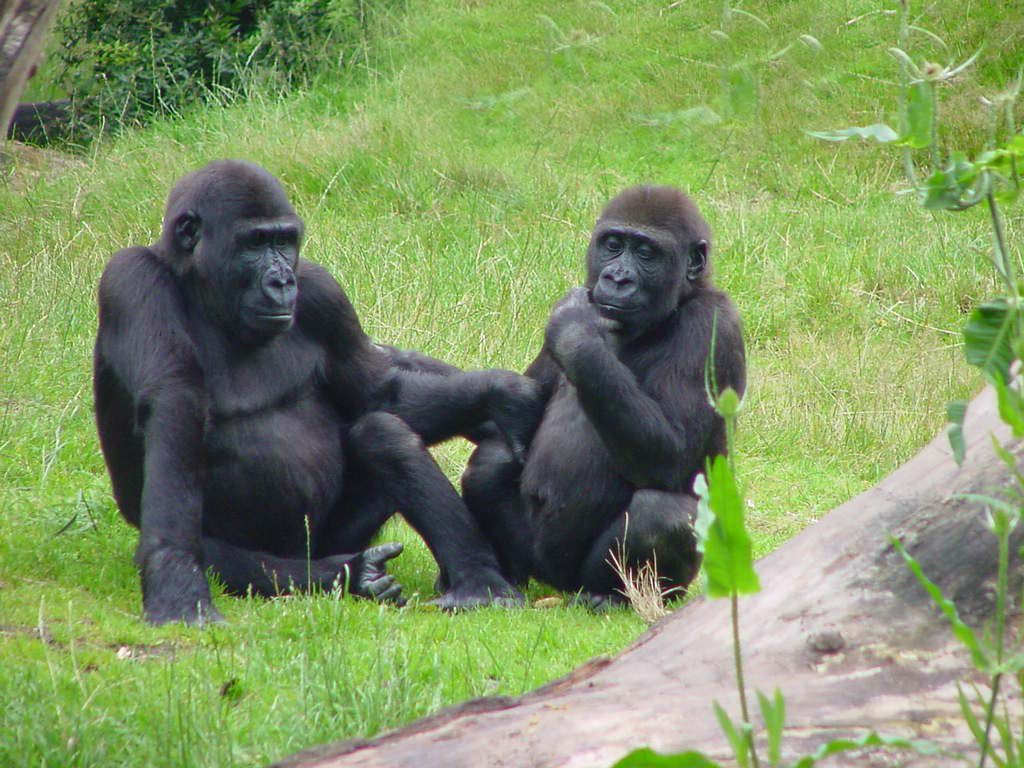
How?
So, after two years’ studying there, there was a small competition to design a building on the campus. And then I designed this little box in front together with my flat mate, Philip. And what I wanted to say with this building is that we don’t need all this kind of dead, concrete, glass, inhumane capsules. We need something that is alive. We need something that changes, that breathes that gives back to the city.
So we developed this … this image shows a nice contrast here between our facade which is alive and changing, and the old facade which is concrete and dead. We developed our facade made out of recycled clothes that just uses a little bit of water to grow a large variety of plants.
You can see it here when it was just installed. This image shows it a few months later. And a few months later again, during the fall.
And actually the prototype of this was developed in my student room because nobody believed that this was possible. So we had to make a mock-up. This was ten years ago (2006). And now you see more of these green facades around. So I think this is something I believed in, and I did. Because I thought if I believe in a better world I should try to make that happen.
And what’s very interesting, but also unfortunate, perhaps, is that a few years after I built this little building the other big building burnt down. In Chinese maybe we can call it “缘分” (destiny). I don’t know. Anyway, it happened.
So, this strengthened me to believe in what I believed. And I realized, there’s a second lesson. The first is do what you do, a better world starts with you.
Secondly, you should be honest. If you think the world should be a certain way then you should also be that way. And then share what you do among each other.
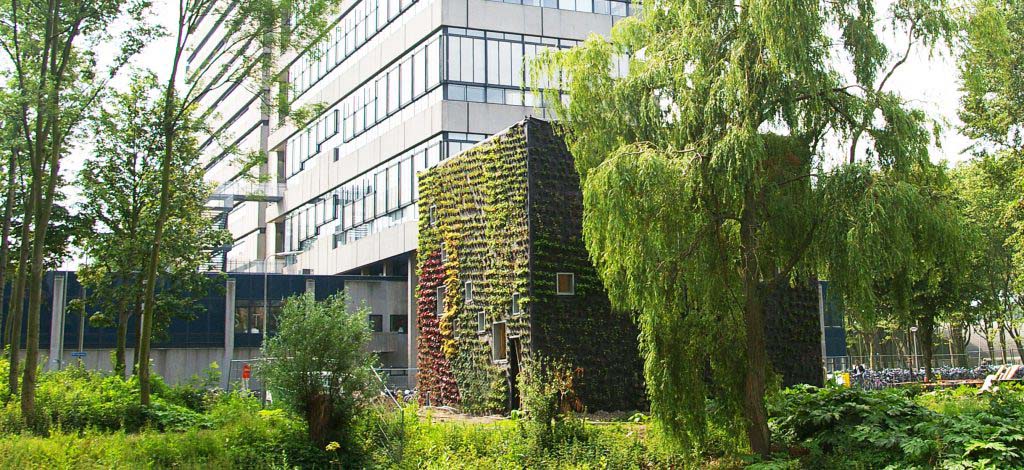
And I also tried to learn. I learned about China. This is a library in Ningbo. Actually it is the second oldest private library in the world. It’s called Tianyi Ge. And I found this library very interesting. Because I went there and it had no books. There were only trees, and some little houses.
And I found that the library over there was meant to recreate an environment which is good for study. An environment that is natural in which we can relax, we can focus, we can study, we can talk with each other. We can be away from the busy, chaotic world around us.
I thought it was a great idea. And I learnt also, that in traditional China, this is a painting from Song Dynasty, people and building were a part of nature. And to study was to be in nature. I thought that’s not bad.
But, where I lived it looked like this. Not really the ideal environment I had imagined. But, ‘no problem,’ I thought ‘I’m going to change that. I’m going to make a little place for myself to study, and to read and so forth.’
So I made this, which you call an urban oasis. Actually you can still see the roofs of the buildings behind that I just showed. So I made a little oasis, a little natural world. Some water, some trees, a waterfall, Buddha, and some birds. I need a cage, otherwise they fly way. I’m sorry. The turtles should be there, also. They’re free and about. This is the view.

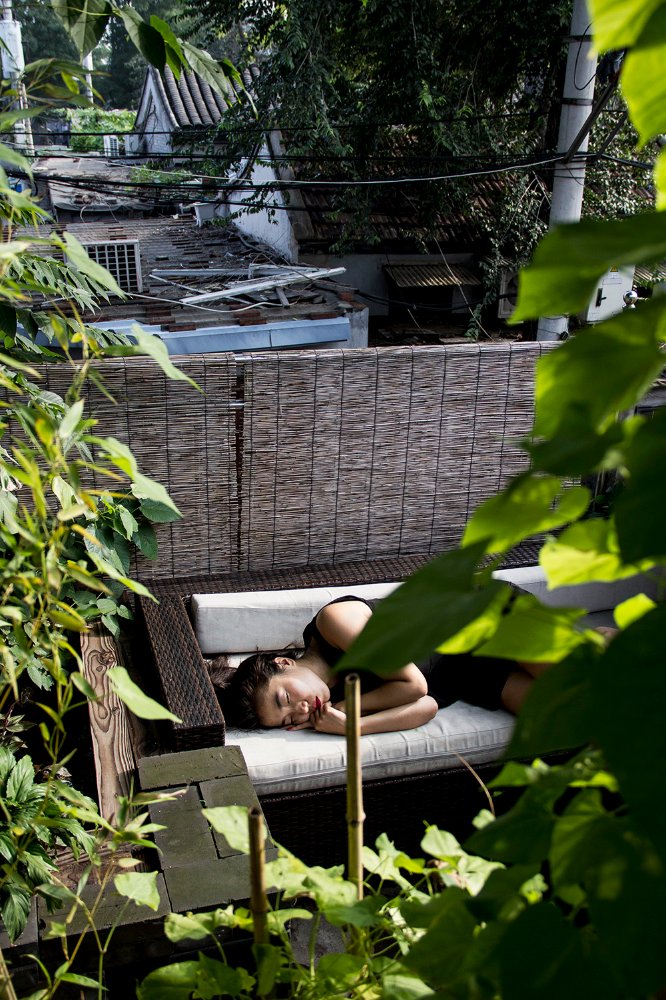
This is the main building that faces you. It’s like TU Delft. Horrible, big, kind of concrete, kind of somewhat… it didn’t feel good for me. And inside those buildings It looked like this. It’s different from what I had thought. It’s different from talking together. It’s different from collaborative working. It’s different from feeling like a home with a big family. There’s one teacher talking to a lot of students. And where I came to study and where I am working now looked like this.
Actually it vaguely reminds me of something I saw before, in a movie in the James Bond movies: a Russian prison. (Laughter)
Actually, this comparison is not so far off from the truth because it was inspired by a Russian ideology of buildings. Making everything very standardized, very simple, very bare. But in my mind, that was not very good for a learning environment. Because this is how I learned that people learn. I learned that people and kids like to learn together, they’re naughty, they’d like to explore. Remember Gyasi? Looking everywhere she wasn’t allowed to look. That’s how she learned and people work the same way.
So, again, there was a competition for a small project in the architecture school where I was working. They made a competition for all the professors that were part of the architecture school. They could renovate one part of the building. And it was a very small project.
But I thought maybe this is interesting to do something. So we were given this one floor to come up with an idea. And I thought, you know what? I’m going to get rid of all the classrooms. I’m going to make it open. And I’m going to put something in the middle that can function like a home base. Something that you can climb on, you can go underneath, you can sit together, you can talk together.
And then all around there’s a series of flexible environment that people can reserve one by one, that can connect together, that can open up and you can have it as one kind of home base.
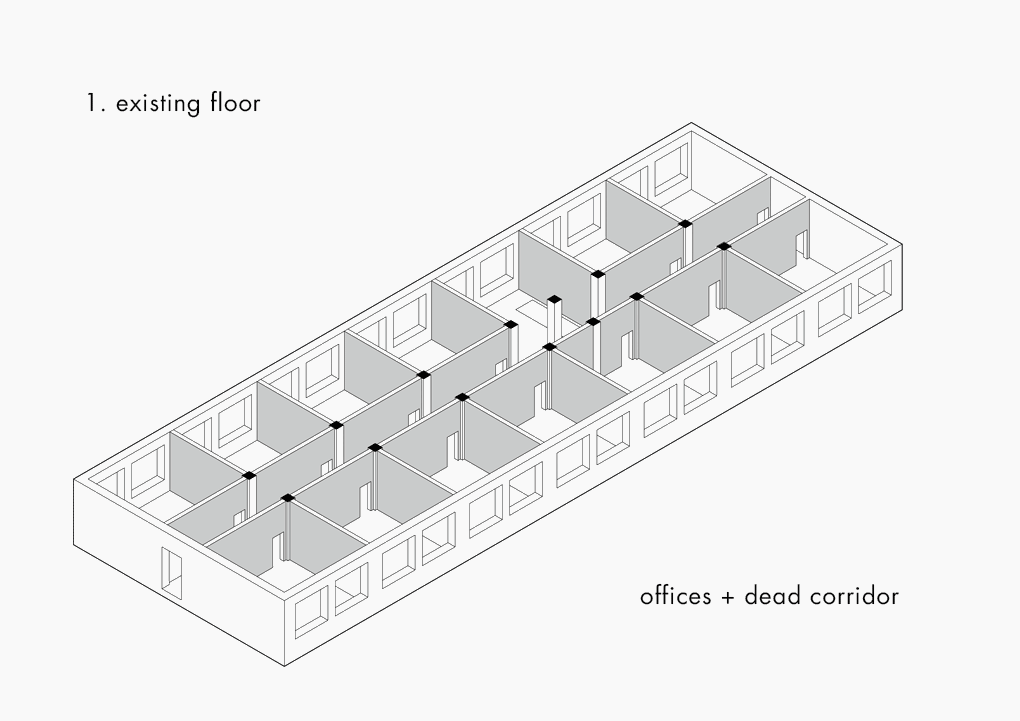
Placement of elements within the total space
So I thought this was a different way of looking at education; looking at education as a way that you can explore by yourself; that you can define who you want to talk to, when you want to talk to them
So there is this box in the middle, and that box allows for a very diverse usage of the space surrounding it, because you can move walls. So that you can have a small lecture. Or you can put tables together to work with your group mates
And you don’t have to have the teacher there all the time to control you, because you can just configure it how you want it. This are some images of places that I couldn’t take photos of yet, because it’s almost done now. I think if you go next week the furniture will be there.
We even utilized every space that you would not normally think of. We kind of added this floor up in the stairwell, so you can sit when you want to make a phone call or so.
We tried to be flexible in terms of using the space and very smart about the environment. For instance here, you can take chairs from the wall to make a small lecture space, if you don’t need them you can put them back.
And in the end, I think here comes to be a lesson three,
“small changes can balance the big problems we have around us today.”
If you can make an effort to make something change in a small way this will balance out the big things in the end.
If I was inspired by a little girl to do something and I do something that inspired someone else; if we all work like that, this can really make a big change.

I think, and I believe, and I have experienced that a better world starts with you. It doesn’t start with raising awareness, it doesn’t start with inspiring others, it starts with you. Secondly, you have to be honest with yourself about the things you do. The thing you do, is that really what you believe in? Or is that only what you demand from others to do. So therefore, do what you say and share what you do. Thirdly, if we want to go towards this future habitat, then we have to realize that these small changes can have a big effect. And this is something I learnt from working with these amazing creatures. You know this is Gyasi, on the left with her own child now, Tayayi. She was born four years ago. You know Gorillas are a bit faster than me; I’m still here. And what these creatures taught me, what these gorillas taught me, is first of all to be respectful. Be respectful for the world that we inhabit and be respectful for the others around you. You know gorillas are amazing creatures. They’re not aggressive. They eat plants. They are vegetarians. They might look very big and impressive but they’re actually very kind animals. And what I learnt most from them is that they don’t do things for their own ego and for their own benefit. Their leader, Bongo is chosen to be the leader by the women in the group not because he is big or because he is handsome or because he is strong, but because he is able to convince the other gorillas that his decisions are good for the whole group. So I think if we can take a little bit of that to make sure that what we do is not only to satisfy our egos, but is good for the cause of all the people around us and for the world at large, we surely can make a better world. Thank you very much.
